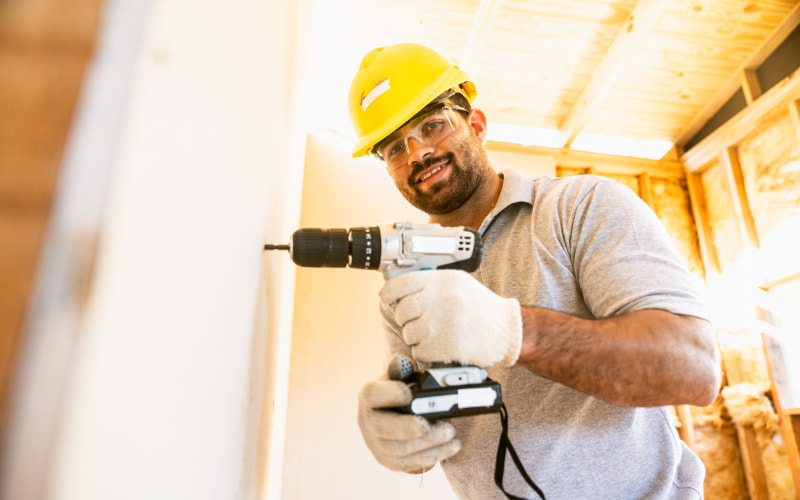Canada Wants Construction Workers — Here’s How to Move and Start Working

Canada is facing a serious labor shortage in the construction industry, and the government is taking bold steps to solve it — by opening the doors to skilled immigrants. If you’re a construction worker looking for international opportunities, this could be your chance to build a future in one of the most welcoming countries in the world.
Why Construction Workers Are in Demand in Canada
The construction sector in Canada is at a turning point. As cities expand and aging infrastructure demands urgent updates, the need for skilled labor is greater than ever. Despite efforts to train more domestic workers, the country simply cannot meet the growing demand. This is why international recruitment has become a key strategy.
This labor shortage isn’t just a temporary issue — it’s a structural problem tied to long-term trends. The Canadian population is aging, and many young people are choosing careers outside of the skilled trades. As a result, governments at all levels are sounding the alarm and looking internationally to fill critical roles that keep the economy moving.
Across the country, major infrastructure projects and housing developments are underway, but there’s a growing shortage of qualified workers to meet demand. With over 700,000 skilled tradespeople expected to retire by 2028, the construction sector is under pressure.
To address this, the Canadian government is not only investing in training programs domestically — it’s actively seeking foreign workers who can help fill the gap.

Canada’s Construction Jobs: Up to $90K/Year
Worried about job security? Canada’s construction sector is growing — and needs skilled workers now. No degree needed!
How Canada Is Attracting Foreign Construction Workers

Canada recognizes that immigration plays a vital role in addressing the skilled labor shortage, particularly in trades like carpentry, electrical work, plumbing, and heavy equipment operation. To make the process smoother for foreign workers, the government has introduced targeted pathways and support programs. These initiatives aim to bring qualified professionals into the workforce quickly and efficiently.
Here are some of the ways Canada is supporting immigration for workers in the construction sector:
- Targeted Immigration Streams: Skilled trades are prioritized in Express Entry draws, especially under the Federal Skilled Trades Program.
- Category-Based Selection: In 2024 and 2025, IRCC is focusing draws on high-demand sectors, including construction.
- Provincial Nominee Programs (PNPs): Provinces like Alberta, Ontario, and British Columbia offer fast-track immigration pathways for construction workers.
- Employer-Sponsored Work Permits: Many construction companies are approved to hire foreign workers through the Temporary Foreign Worker Program (TFWP).
Who Is Eligible to Immigrate as a Construction Worker?
Before applying to immigrate, it’s important to understand the basic eligibility requirements. These vary depending on the program, but most focus on professional experience, language skills, and formal training. The goal is to ensure that incoming workers can integrate successfully into the job market and contribute to ongoing construction efforts.
To be eligible under most programs, you’ll need to demonstrate:
- Work experience in a skilled trade such as carpentry, electrical work, plumbing, or equipment operation
- Language proficiency in English or French (usually CLB level 4 or above)
- Credential recognition or proof of training/apprenticeship (where applicable)
- Ability to pass a medical exam and background check
Some PNPs have more flexible requirements depending on regional needs.
Step-by-Step: How to Apply
The Canadian immigration process may seem complex at first, but it’s well-structured and transparent. If you’re a skilled construction worker looking to build a life in Canada, following the correct steps is crucial to success. Below is a simplified breakdown to help you get started on the right path.
- Check your eligibility: Use the official Come to Canada tool to see which immigration programs you qualify for.
- Gather documents: This includes your passport, proof of work experience, educational credentials, language test results, and job offers (if any).
- Take a language test: Such as IELTS General Training or CELPIP for English.
- Create an Express Entry profile: If applying through a federal program.
- Apply to a Provincial Nominee Program (optional): Especially if you have a specific region in mind.
- Receive an Invitation to Apply (ITA): If selected from the Express Entry pool or nominated by a province.
- Submit your application: Pay the fees and upload all required documents.
- Wait for processing: Processing times vary, but usually range from 6 to 12 months.
Tips to Strengthen Your Application
Want to increase your chances of being selected? A well-prepared application can make all the difference. From improving your language scores to getting your qualifications assessed, every detail counts. Employers and immigration officers alike look for candidates who show initiative and readiness to integrate into the workforce quickly. If you can show recent training or a job offer, your chances improve significantly.
Here are a few effective ways to make your profile stand out:
- Get your qualifications assessed through a recognized body like World Education Services (WES)
- Improve your language scores — higher CLB levels boost your CRS score
- Complete online courses to show recent training (see our guide on free courses for construction workers)
- Secure a job offer — this can fast-track many immigration streams
Conclusion: Build Your Future in Canada
With a nationwide labor shortage and pro-immigration policies, Canada is one of the best places for construction workers to start a new chapter. The construction sector not only offers job stability, but also opportunities for career advancement, licensing, and long-term settlement. Many newcomers have successfully built new lives in Canada by starting in the trades — and you can be next.
Whether you’re a carpenter, plumber, welder, or heavy machinery operator, your skills are needed — and valued. By preparing carefully and showing your qualifications, you’ll increase your chances of success. Immigration is a big step, but for many, it’s the doorway to a better life.
Ready to take the next step? Start by checking your eligibility and exploring the programs available. Whether you’re a carpenter, plumber, welder, or heavy machinery operator, your skills are needed — and valued.
Ready to take the next step? Start by checking your eligibility and exploring the programs available.
And don’t forget to check out our guide: Free Online Courses to Kickstart Your Career in Construction — it could give your application an extra edge.

Free Online Courses for Construction Jobs
Learn construction skills online for free and boost your chances of landing a high-demand job — from anywhere.




